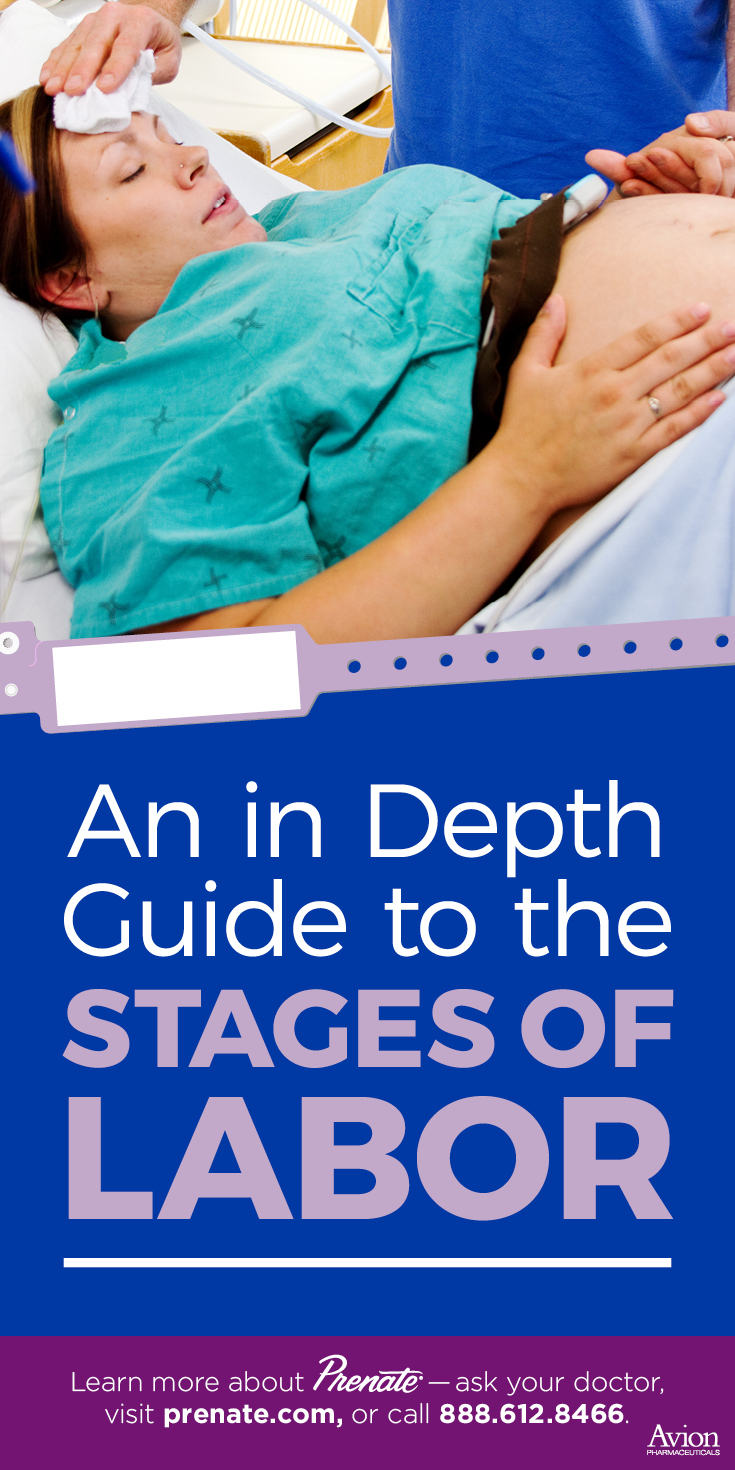Your In-Depth Guide to the Stages of Labor
February 21, 2020
During a vaginal birth, a mother’s cervix widens to accommodate her baby’s passage through the uterus and vagina. Tracking cervical dilation is one way medical professionals gauge the progression of labor. Typically, the cervix opens at a steady, predictable rate as the mother goes through the stages of labor.
The Three Key Stages of Labor
No two deliveries are identical. However, there are typical stages, phases and symptoms that most women will experience during labor.
Stage I: Early Labor, Active Labor and Transition
The first stage of labor is typically the longest and includes three distinct phases: early labor, active labor and the transition phase.
Early labor occurs between the onset of true labor and the point at which the cervix is dilated to 3 centimeters.1 Early labor is also the phase at which the mother’s amniotic sac may rupture (water breaks).
In the active labor phase, the cervix continues to dilate from 3 centimeters to 7 centimeters. During this phase contractions are likely to be stronger and closer together. The active labor phase is when the mother needs to head to the hospital or birthing center.1
In the transition phase, the cervix dilates from 7 centimeters to 10 centimeters. This is often the most challenging and painful phase, but it is also typically the shortest.1
Stage II: Full Cervical Dilation to Delivery
Once the cervix has fully dilated, the second stage of begins.
It’s important to note that once the cervix has reached 10 cm it doesn’t necessarily mean the baby will be delivered immediately. Sometimes the cervix may reach 10 cm before the baby has had a chance to travel down the birth canal. Once the baby is in the right position, only then will it be time to push. This is usually the most uncomfortable and intense stage of childbirth. Fortunately, it is also usually the shortest. For some mothers, only a few pushes are needed; other mothers may need to push for an hour or more.2
The timeframe for this stage can be affected by several different factors, including whether the mother has delivered a baby before, if she has had an epidural, and her health and the health of her baby. Hospitals and birth centers also have varying policies on how long they will allow a mother to push before other methods are employed, such as the use of forceps, vacuum-assisted delivery or a cesarean section.2
After the baby has been delivered, the second stage of is complete and the third and final stage begins.2
Stage III: Delivery of the Placenta
The third and final stage of childbirth is rarely highlighted in television or movies. It’s the often-forgotten stage where the baby has been born but the mother’s body still has work to do: delivering the placenta.
The placenta is a pancake-shaped organ that works as part of the baby’s life support system in utero. It attaches to the uterus and connects to the fetus by the umbilical cord, providing vital exchange of hormones and blood flow.3
After delivering a baby, the mother’s body no longer needs the placenta, and she will usually deliver it in much the same way that she delivered the baby. Contractions help expel the placenta, moving it through the birth canal; however, these contractions are usually much less intense and the mother can often deliver the placenta with a single push, often in less than half an hour.2
Stages of Childbirth At-A-Glance
Here’s a quick overview of the stages and phases of cervical dilation and delivery. Review these and discuss them with your health care provider and support person so you know what to expect when the big day arrives.
Stage I
- Occurs between the onset of true labor and full cervical dilation
- Includes three phases (early labor, active labor, transition)
- Characterized by contractions, amniotic sac rupture
- Usually the longest stage, can vary greatly in duration
Stage II
- Occurs between full cervical dilation and delivery of the baby
- Often the most uncomfortable or painful stage
- Delivery can occur after only a few pushes or mothers may need to push for hours
Stage III
- Occurs from the time the baby is delivered until the delivery of the placenta
- Placenta delivery is characterized by less painful, less intense contractions
- Can last anywhere from 5 minutes to 30 minutes
Prenate® Vitamin Family
Getting the best start in life means getting a head start on prenatal nutrition. Our products are created with the ongoing nutritional needs of expecting mothers and their babies in mind. From preconception to postpartum needs (and many others to help throughout the process), the Prenate® Vitamin Family offers prenatal supplement options for expecting mothers. Speak with your doctor today about the benefits of choosing a daily prescription prenatal vitamin.
You Are About To Leave This Website
By clicking continue, this link will take you to a website to which Alora Pharmaceuticals Policies & Terms of Use do not apply. Alora and its subsidiaries do not control the content or accuracy of third-party websites and assume no responsibility for their use.
















